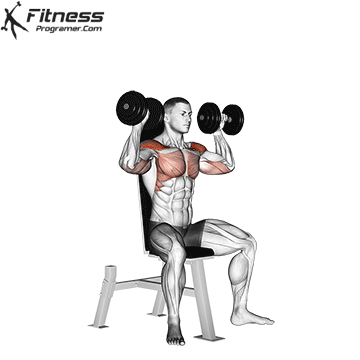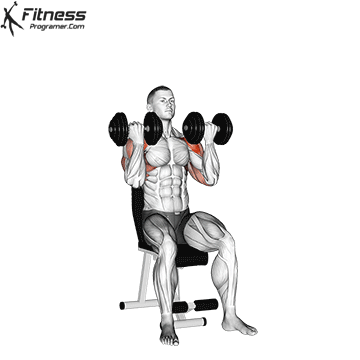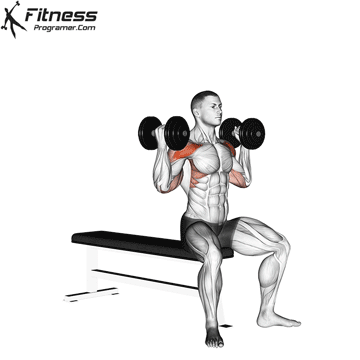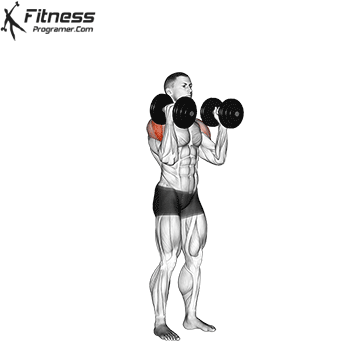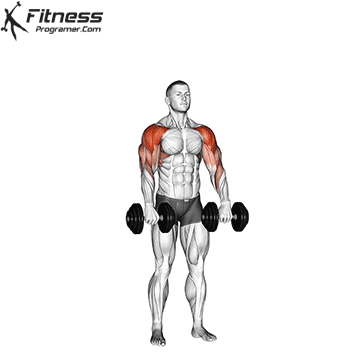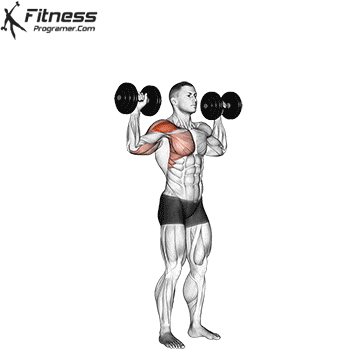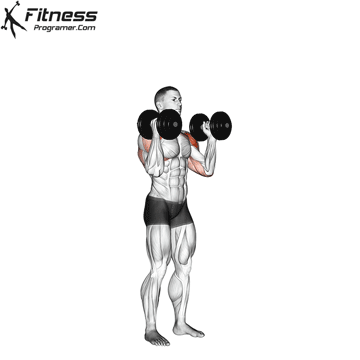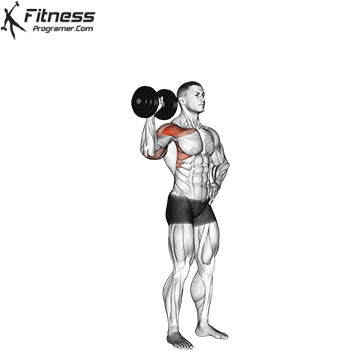Overview
The standing dumbbell shoulder press, also known as the “Dumbbell Overhead Press” or simply the “Shoulder Press,” is a strength training exercise that targets the muscles of the shoulder, primarily the deltoids. In this exercise, you lift a weight (usually dumbbells or a barbell) overhead while standing. It is an effective compound exercise that also engages other upper body muscles, including the triceps and upper chest.
How to Perform the Standing Dumbbell Shoulder Press
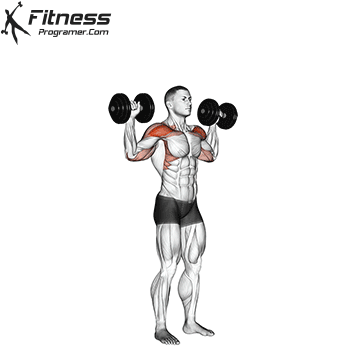
Stand tall with feet shoulder-width apart and knees slightly bent.
Hold a dumbbell in each hand at shoulder level with your palms facing forward.
Brace your core and keep your chest up and spine neutral.
Press the dumbbells overhead, extending your arms without arching your back.
Lower the dumbbells under control to shoulder level to complete one rep.
Repeat for desired reps, maintaining steady posture throughout the set.
Tips for Proper Form
Engage your core to avoid leaning or overarching your lower back.
Squeeze your glutes to stabilize the pelvis and protect your spine.
Keep your wrists stacked directly above your elbows.
Press the dumbbells slightly back, not just straight up, to align with shoulder mechanics.
Exhale as you press, inhale as you lower.
Common Mistakes
Excessively arching the lower back, placing stress on the spine.
Pressing unevenly, leading to muscular imbalance.
Allowing the elbows to flare too wide, risking shoulder strain.
Using momentum from the legs, which reduces upper-body engagement.
Starting with the dumbbells too far in front, which can strain the shoulders.
Benefits of the Standing Dumbbell Shoulder Press
Develops Shoulder Strength: It targets the anterior and lateral deltoids for balanced shoulder growth.
Improves Core Stability: The standing position activates core and postural muscles to maintain upright form.
Builds Symmetrical Strength: Dumbbells require both arms to work independently, reducing strength imbalances.
Enhances Joint Stability: Promotes healthier shoulder mechanics and rotator cuff engagement.
Supports Functional Movement: Mimics real-life and athletic movements involving overhead lifting.
Increases Overhead Pressing Control: Builds better neuromuscular coordination and muscle activation.
Strengthens Upper Back and Traps: These supporting muscles stabilize the shoulder girdle during the lift.
How to Incorporate Into Your Routine
- For Beginners: Use 2–3 sets of 6–8 reps with light dumbbells to learn form and coordination.
- For Hypertrophy: Perform 3–4 sets of 8–12 reps with a controlled tempo and full range of motion.
- For Strength: Do 4–5 sets of 4–6 reps with heavier weight while keeping strict form.
- For Functional Training: Combine with walking lunges or carries for total-body integration.
- For Circuit Training: Use in upper-body or full-body circuits for 10–12 reps with minimal rest.
- For General Fitness: Include 2–3 sets of 8–10 reps once or twice weekly in your push-day or full-body workout.
- For Athletic Performance: Pair with explosive movements like push presses or landmine presses.
Standing Shoulder Press: Muscles Worked
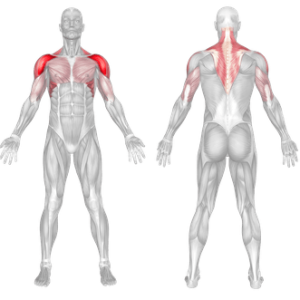
Frequently Asked Questions
Is the standing version harder than seated?
Yes, because it recruits more stabilizer muscles and requires greater balance and core activation.
Can this help improve posture?
Absolutely. It builds upper-back and core strength essential for upright posture.
Should I press both dumbbells at once or alternate?
Both methods work. Alternating presses add more core challenge, while pressing both improves symmetry and strength.
What weight should I start with?
Choose a weight you can lift for 8–10 reps with good form and without swaying or leaning back.
Standing Dumbbell Shoulder Press Variations
Variations of the standing dumbbell shoulder press can help add variety to your shoulder workout routine and target the muscles from different angles. Here are some common variations to consider:

